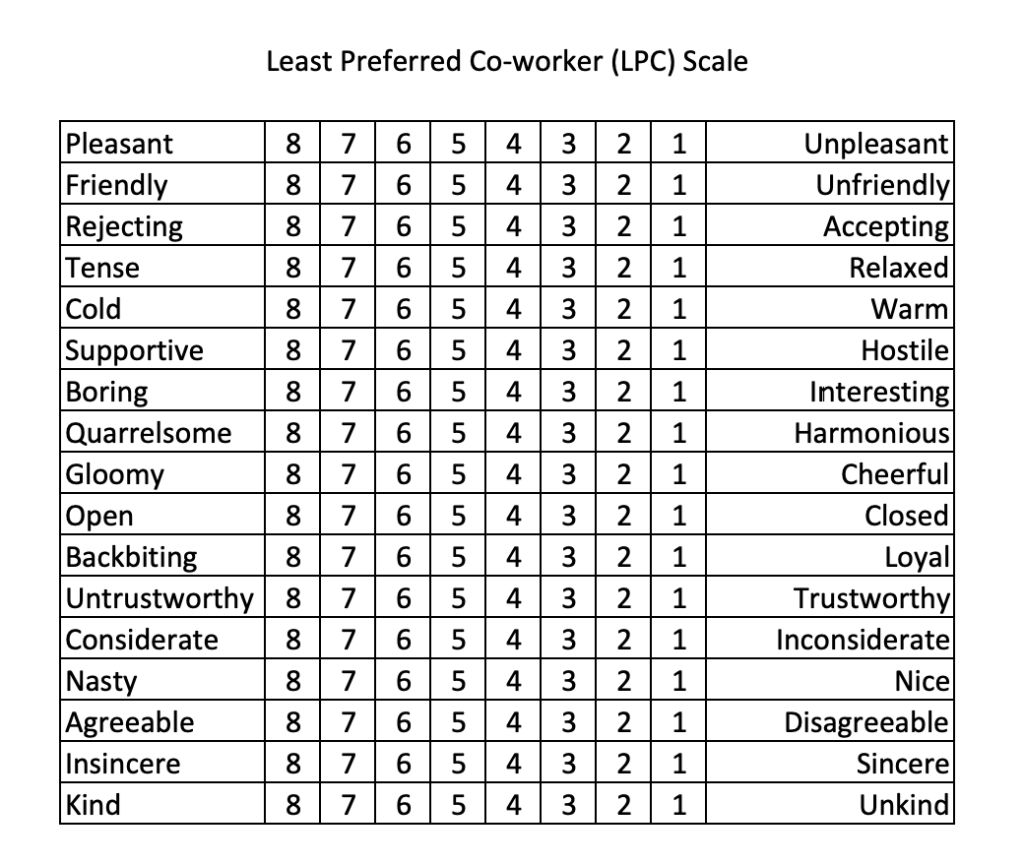
In our continuing look at Leadership models, in today’s post, we’ll be looking at Fielder’s Contingency Model.
As challenging and importantly, different, situations arise in the workplace, Fielder’s Contingency Model can help show how the most appropriate and effective leadership style can be pinpointed and utilized.
In this post we’ll be sharing
- What is Fiedler’s Contingency Model?
- Why would you use Fiedler’s Contingency model
- Who was Fred Fiedler?
- Two types of Leadership Styles within the Fiedler model
- What is situational favourableness?
- How to use the Fielder Contingency Model
- Issues with Fiedler’s Contingency Model
Use the link to jump to the appropriate section.
What is Fiedler’s Contingency Model?
Fiedler’s model is a leadership model that identifies an appropriate leadership style for a given situation. It relies on a combination of two forces:
- Leadership style – Based on two distinct methods.
- Situational favourableness – based on characteristics within the workplace.
Why would you use Fiedler’s Contingency model
The model provides a basis for selecting a leader (based on leadership style) centered around the given situation that the organization finds itself in.
Who was Fred Fiedler?
Before we review the model, let’s take a look at the man that developed the method.
Scientist, Fred Fiedler developed his Contingency Model, when studying leaders’ personality and characteristics of leaders during the mid-1960s.
Fielder was a leading researcher in industrial and organizational psychology.
Focusing on leadership styles, he was able to advance understanding of leadership away from merely analyzing traits and personal characteristics that were in place before his study.
Two types of Leadership Styles within the Fiedler model
Fiedler’s Contingency model defines two leadership styles:
1/ Task Orientated
- Focus on the task and getting the job done
- Relationships come second to the task
2/ Relationship Orientated
- Focus on engagement with colleagues
- The task can sometimes suffer as a result
Fiedler’s model shows neither style is better than the other.
What is situational favourableness?
Fiedler determined that controlling the group is essential to leadership.
Leaders can only be confident that orders will be executed if there is control of the group.
Without control, leaders cannot assume orders will be followed.
Situational favourableness referred to a combination of three factors that implied effective leadership. Fielder argued that these were:
- Leader-member relations (how a boss relates to thier subordinates)
- Task structure.
- Position / power.
How to use the Fielder Contingency Model
There are three steps to utilizing the model:
- Identify the leadership style of an individual
- Determine the “situational favorableness.”
- Determine the most effective leadership style
Let’s take a look at these in a little more detail:
Step 1: Identifying a leadership style
In order to use the model effectively, the first step is to identify the leadership style of the proposed leader(s).
As you’ll remember from our introduction, within the model, there are two types of leadership
- Task Orientated
- Relationship orientated
In order to identify which category an individual was part of Fiedler developed a tool – the least preferred co-worker scale.
What Is the Least-Preferred Co-worker Scale?
This process required a leader to rate individuals they would work with utilizing a scale. The results of which would indicate which category of leader they were.
You can see an example of the scale here:

The individual completes the assessment, scoring each attribute against a person they had difficulty in getting a task completed.
They score the person as they appear to them.
Once completed:
- By summing these scores, we can then determine a final rating.
- A high least preferred co-worker score (64 or above) intimates a relationship-oriented leader,
- A low least preferred co-worker score (57 or below) intimates a task-oriented leader.
Fiedler described neither style as above the other, and each has its place and its issues. For example
- Task Orientated leaders may fail as they fail to engage sufficiently with colleagues
- Relationship Orientated leaders may fail due to a lack of focus on the task
Step 2 Situational Favourableness
As both styles have issues and neither is superior to the other, how do you determine which to use?
Fiedler described that the situation you find yourself in is key, and depending on this, one style may be preferable over the other.
This is termed Situational Favourableness.
There are three factors that determine this:
- The levels of trust, respect, and confidence which are in place between a leader and their followers.(colleagues)
- How well the task has been defined
- Whether the followers accept the leader’s power.
Fiedler showed that a situation becomes favorable when
- High levels of mutual trust exist
- Leaders and Followers have respect and confidence with one and other
- There is a clear task
- The task is controllable.
- Leader power is accepted by followers.
If the opposite of this is true, then the situation is termed unfavorable.
Leadership Effectiveness
Fiedler described leadership effectiveness as being likely based upon the situation.
Effectiveness can be predicted based on the relationship between leadership style and situation.
Remember, both styles of leadership can be effective.
The situation in which the leader commands ascertains the type of behavior that will be most effective.
Step 3 – Determine the most appropriate leadership style.
Fiedler reasoned that Situation Favourableness had three conditions that favored particular effective leadership styles.
- High Situation Favourableness = task-oriented leader
- Moderate or Intermediate Situational Favourableness = relationship-oriented leader
- Low Situation Favourablenss = task-oriented leader
Task Orientated Leaders tend to be successful when faced with extremely favorable or extremely unfavorable conditions i.e.
- Significant trust, respect, and confidence exist between stakeholders or where there is no trust or respect.
- A clear task exists, or the task is vague and unclear.
- Leadership is not questioned, or followers are rebellious/challenging (i.e., during a crisis).
What about relationship orientated leaders?
Fiedler described that moderate conditions breed more effective relationship orientated leaders.
What do we mean by moderate conditions? We mean that they are:
- Moderately favorable or
- Moderately unfavorable.
Issues with Fiedler’s Contingency Model
As with all Leadership & Management models, there are positives and weaknesses.
We’ve shared below the three most common criticisms leveled at Fiedler’s model.
1/ The model is inflexible
The model assumes that a leadership style is fixed.
The implications of this are that if a leader possesses an incorrect leadership style, then the leader needs to be changed.
The model fails to capture that people can learn and adapt.
2/ Co-worker scale when scores are moderate
The least preferred co-worker scale can be ambiguous, where scores fall in the middle.
3/ Reliability of co-worker scale
The least preferred co-worker scale is unreliable in determining leadership capability.
Summary
We hope you enjoyed this article on Fielder’s Contingency Model. As we’ve described, the model provides a method for reviewing leadership and how situations can drive leadership selection. The model highlights how favorable & unfavorable conditions can trigger the requirement for different leadership styles.
If you have some thoughts on the model or perhaps how we can identify and select leaders within our organizations, we’d love to hear your thoughts.
You can comment below or message us on Twitter.
This article is part of our Management & Leadership Guide.